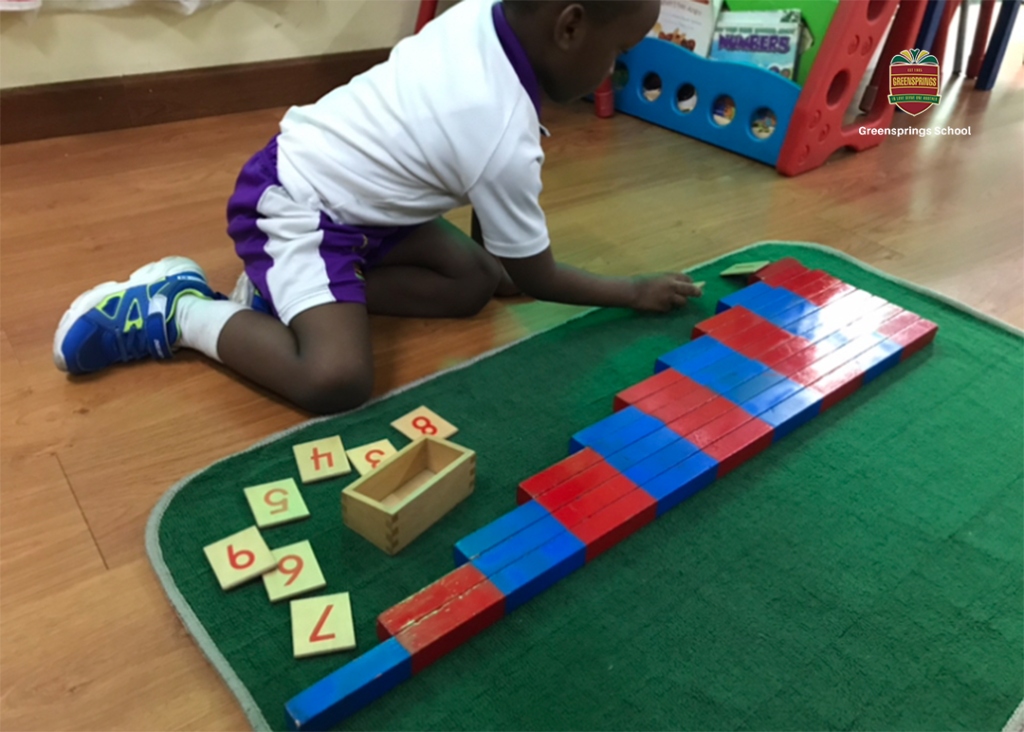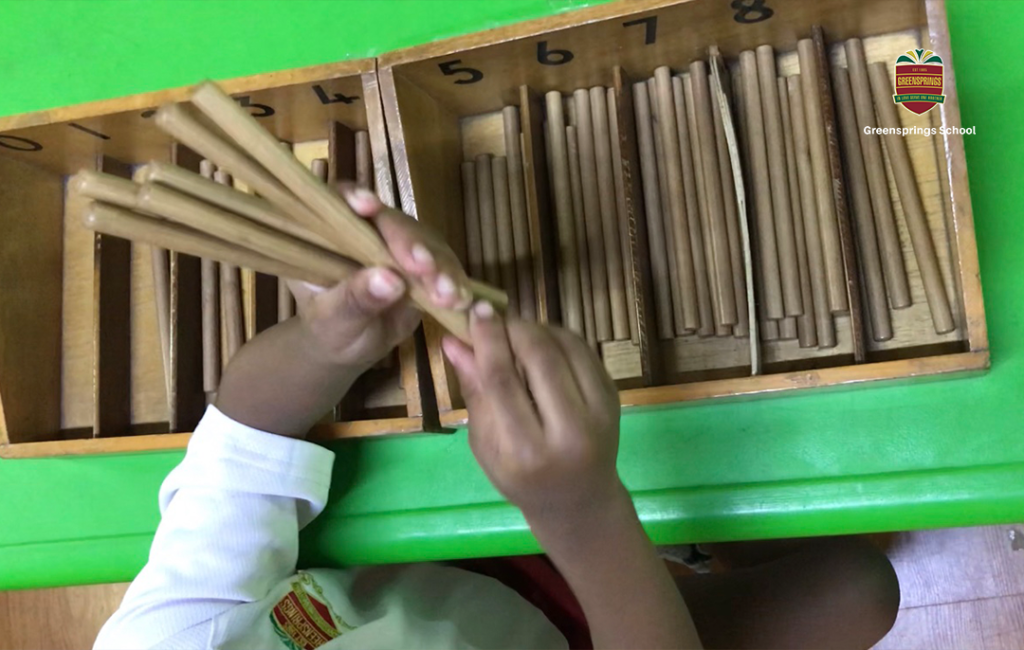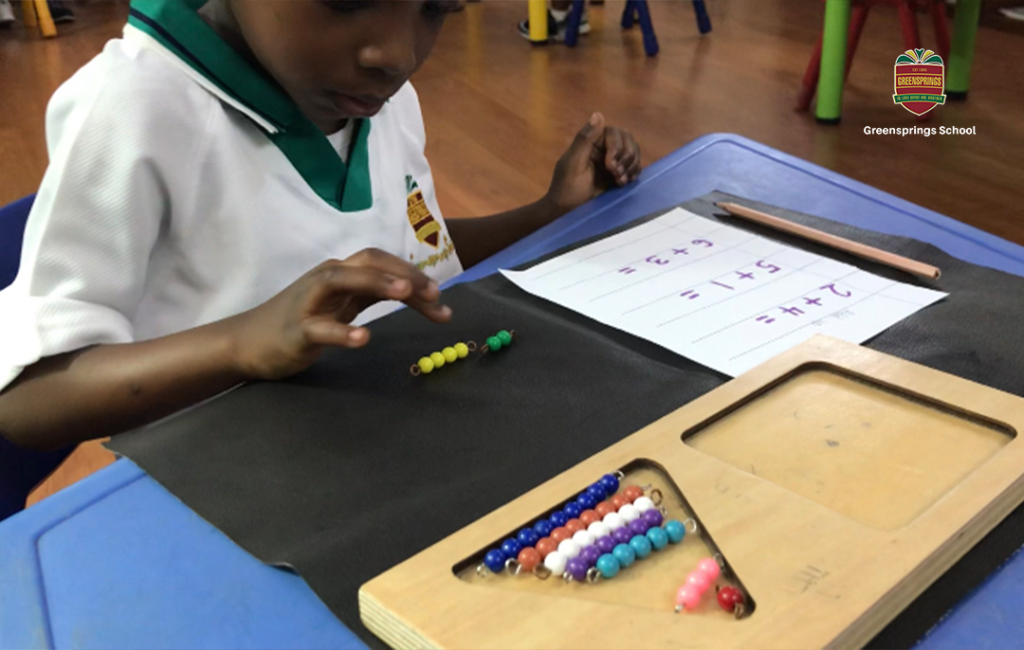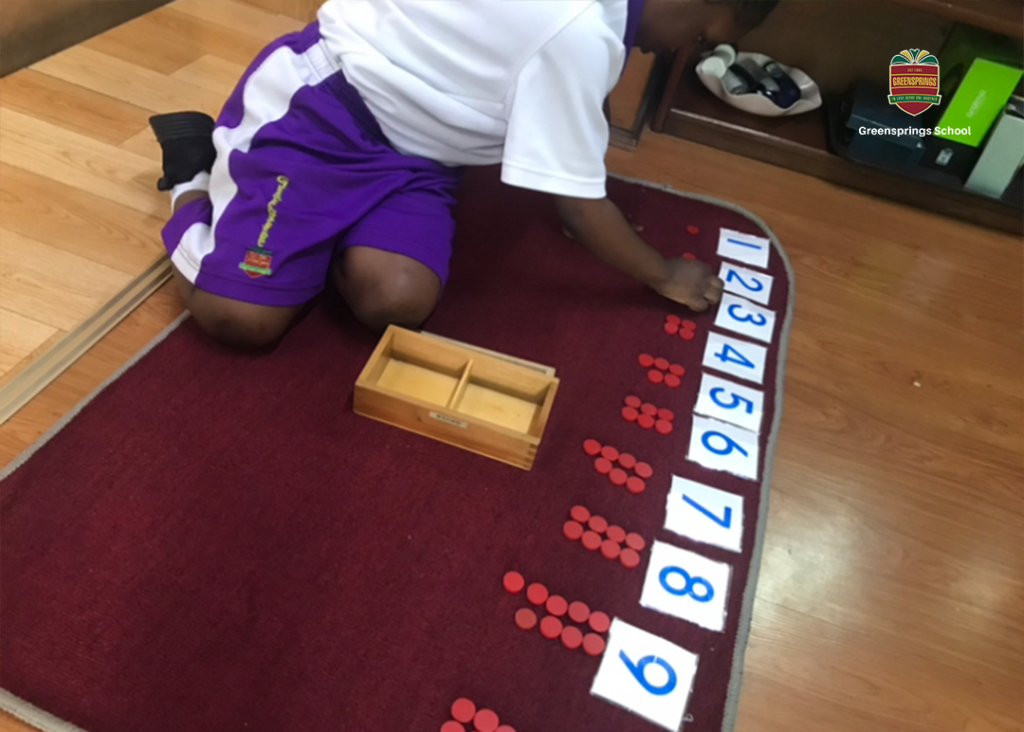Math activities for preschoolers are key, and finding fun and interesting ways to teach them to young children is essential. It is crucial to use hands-on math activities whether you are teaching math to a classroom full of children or homeschooling one or two at a time.
These math activities allow children to interact with numbers in a fun and engaging manner. This is significant because it encourages them to acquire an early interest in mathematics. To this end, we have compiled 5 interesting math activities for preschoolers that you also can try.
5 Interesting Math Activities For Preschoolers
1. The Number Rods
With Number Rods as one of the math activities for preschoolers, children can learn how to quantify measurement. The Number Rods assist children in learning the names of numbers and their sequence. They can also learn to associate numbers with amount accurately.
A set of Number Rods consists of ten colored rods that are divided into red and blue sections of equal size. The length of the rods increases in a linear fashion, with the second rod being twice the length of the first, the third rod three times the length of the first, etc.
Children grow to understand that each rod represents a unique quantity and that each number is represented by a single object as a whole, separate from others.
The child can name the rods by their length and count the coloured portions, or can choose a rod from a group based on its name.

2. Golden Beads:
Another math activity for preschoolers is the Golden Beads. These golden-coloured math beads are presented in units and wired together in bars of 10, squares of 100, and cubes of 1,000. They are made of uniform size that are used to assist children to grasp tens, hundreds, and thousands unit amounts. One unit, or point, makes up a single bead. The number 10, or a line, is represented by ten beads strung on a wire.
The Golden Bead Material not only improves a kid’s comprehension of amounts but also introduces them to the decimal system.
As seen in the video below, the instructor may ask several questions, leading the child to make mental notes of the features of each of the quantities:
The instructor also teaches the child the terminology associated with the number of beads.
3. Spindle Box:
After the child has a firm grasp on the numbers 1 through 10 and understands the accompanying numeric symbols, the wooden spindles are presented.
The material is divided into two wooden boxes, each with five long sections. A numeral is printed on the back of each compartment. The first box contains numbers 0 to 4, while the second box has numbers 5 to 9. There are a total of 45 wooden spindles in the container. The materials are also made to fit in the hands of little children.
The Spindle Boxes are included in our collection of math activities for preschoolers.
Top 10 Best Free Math Apps & Games You Should Install on Your Child’s Phone

4. Addition with Short Bead Stair:
The child learns how to add numbers up to ten using the Short Bead Stair, then records the results on the series one sum card. This math activity for preschoolers demonstrates a tactile method of practicing addition to children.
A set of beads is placed on the table, and the child counts with their fingertip or the tip of a pencil. The number is then written in the first position. The second addend is also counted and written down.The child then string the beads together, add with a fingertip or a pencil, and record the “sum” in the box.
This is an illustration of how the math materials advance in a set order from tangible to abstraction. The kids love this exercise and ask for it every time they come to school.

5. Cards and Counters:
A deck of wooden numbered cards and little red wooden circular counters make up Cards and Counters. Typically, these are packaged in a wooden box with compartments for each item.
As they relate actual red counters to their appropriate numerical representations, we have seen children’s arithmetic comprehension grow piece by piece.
From one perspective, the Cards and Counters allow children to double-check their comprehension of a subject by matching the qualitative, or tangible, with the quantitative, or abstract, before gradually eliminating the concrete.
At Greensprings School, one of the key disciplines we teach is Mathematics. It is because we recognise the importance of providing a strong math foundation to children at an early age, since this will enable them to handle more difficult arithmetic issues later on.

Check out the benefits of early childhood education to discover more about our unique approach.

